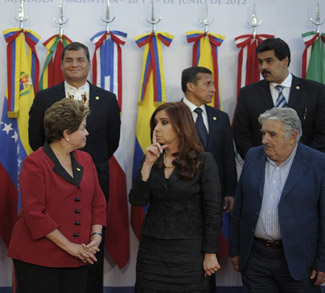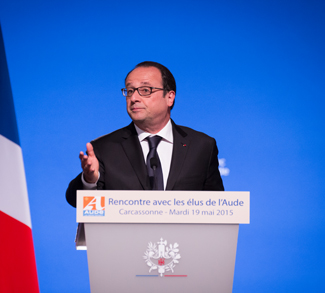Regionalism, or more specifically, regional integration, refers to a process whereby groups of neighbouring countries deepen institutional ties by liberalizing their trade – usually through free trade areas and investment incentives – or by pooling national sovereignty into transnational organizations which are granted the authority to establish policy on key issues, such as human rights. Sometimes regional integration goes a step further, and attempts to foster a sense of community by creating a brand new regional identity.
For this, the Association of Southeast Asian Nations (ASEAN) is a good example, as its constitution includes a provision to nurture a socio-cultural community alongside its economic and security branches. Whether the focus is on trade, politics, or community, the purpose of regional integration is simply power in numbers: individual member countries can be more prosperous, stable, and more influential as a bloc than they can hope to be on their own.
A Brief History of Latin American Integration
Latin America has courted the idea of strength through regional integration for generations. Simon Bolivar, 19th century Venezuelan statesman and champion of South American independence, was vocal about his desire to see the coming-together of regional governments and their people. Since then, emerging South American powers have pushed for increased integration as a way to capitalize on their national assets and gain relevance in the global market.
Today, South American regionalism is primarily driven by the Union of South American Nations (UNASUR). UNASUR began its operations in 2011 and its membership boasts every South American state with the sole exception of French Guiana. The organization has already set some lofty goals for itself, envisioning a future regional currency, passport, and even a joint parliament.
The stated goal of UNASUR is to pursue growth not just for growth’s own sake, but also for the greater goal of reducing inequality and poverty; problems which previous economic strategies have failed to address. Like many developing nations around the world, those in Latin America have a long history of experimenting with West-endorsed, neoliberal trade policies. These policies have included: specializing in export-oriented primary products, reducing government spending on social services, and increasing trade with the developed world. However as the years marched on and these strategies failed to bring prosperity and change to impoverished and underprivileged populations, South American governments decided to step away from this pattern and instead pursue change by increasing ties with one another. UNASUR is the latest substantive effort to do this.
It has been a long road to reach this moment in South American regionalism, and many lessons were learned along the way. One important teacher was the predecessor to UNASAR- the Andean Community of Nations (CAN). This organization was formed in 1969 by Ecuador, Colombia, Chile, Paraguay, Peru and Venezuela. Originally envisioned as a trade bloc, CAN gave rise to harmonized policies and institutions that were meant to facilitate economic relations amongst member states and provide more leverage in dealings with external powers. It followed the European model of a regional organization with a kind of supra-state structure. However, it is often criticized for becoming bogged down by disagreements between its members. Though highly centralized, no reliable conflict-resolution framework was ever put in place, and political differences persistently produced significant delays and impasses. Though CAN is still in existence today, the rise of other, more thoroughly institutionalized and more strongly supported organizations have left CAN a secondary consideration in contemporary regional endeavours, moreover one with only a handful of remaining members.
The Southern Common Market (MERCOSUR) was the dominant regional presence in Latin America for many years. Originally a 1980s trade agreement between Argentina and Brazil, it later expanded to include Paraguay, Uruguay, CAN member states as associates, and soon Venezuela as well. Like CAN, it is intended not only to improve and deepen regional trade, but also to present a strong, large, unified South American economy to Western trading partners. In some ways, MERCOSUR sought to overcome the weaknesses of CAN. Whereas CAN established a central organization but failed to implement proper conflict resolution processes, MERCOSUR is less a governing body and more a rough framework; it is a set of institutions and practices designed to facilitate intergovernmental relations and agreements. Moreover, where CAN has maintained a mostly economic and commercial focus, MERCOSUR has attempted to foster a sense of community and regional identity, similar to ASEAN’s Socio-Cultural Community. Importantly, both the economic and the social goals of MERCOSUR have been designed in part to address internal problems such as poverty, corruption, and inequality. It is hoped that the pooling of resources and standardization of political practices can improve conditions in a way that previous neoliberal policies never could. Unfortunately, even with a framework in place specifically designed to assist intergovernmental relations, without a strong, European-style superstructure or central body, MERCOSUR has been faced with enforcement difficulties, and fewer than half of its directives have come into effect.
UNASUR represents a step forward in the evolution of South American regionalism. It seeks to bridge the two methods of CAN and MERCOSUR. It is institutionalized in a supranational structure, like CAN or the EU, but it also has a solid foundation of conflict resolution and enforcement processes. Moreover, like MERCOSUR, it has a strong focus on the alleviation of poverty and inequality and seeks to foster a sense of regional community, thereby reducing the often divisive effect of zealous nationalism that can impede effective regional policy-making.
UNASUR is considered to be something of a success story, and it has sparked a renewed sense of optimism surrounding South American regional integration. In 2010, for example, while it was still in the final stages of its official creation, UNASUR managed to strike a blow for democracy by reaching consensus on, passing, and publicly announcing a strong condemnation of the turmoil and coup in Ecuador. While a simple finger-wag may not seem impressive on the surface, one need only glance at other regional blocs to appreciate how rare such a prompt, strong statement truly is. ASEAN, for example, is famous for its long-standing policy of skirting contentious topics and doing everything it can to avoid reprimanding its members or even commenting on their internal affairs. In South America, a region that features several different styles of government, a rapid, unambiguous defence of electoral democracy is an impressive display of regional unity and decision-making, especially considering the relative youth of the organization.
The EU Factor
Despite all of its successes and the lessons learned during South America’s ongoing integration project, the recent crisis plaguing the European Union has led many to question the future of South American regionalism. Onlookers are concerned that the crumbling European situation spells doom for the general model of institutionalized integration, or at the very least, that it might diminish the will to pursue a regional parliament and regional currency in South America.
While these fears may prove to be unfounded, they will likely slow the process down. However, in the end it is quite likely that the march towards regionalism will continue. South American regional integration has been on the agenda for far too long to be abandoned now, and UNASUR’s successes have been too notable.
More to the point, perhaps, is the difference in the motivations underpinning the integration projects of Europe and South America. Aside from the obvious economic gains, in the case of the European Union, integration was seen as the only reliable way to ensure peace between states that had fought each other in two world wars. Integration was a matter of each country’s national security. With the fear of world war between major European powers long erased, and economic woes piling up, it is reasonable to wonder if there are enough factors remaining to hold European regionalism together. In South America, however, a strong incentive for regionalism persists: the need to conquer poverty, corruption, and inequality. Irrespective of other considerations, the rationale for pursuing integration as a means to address internal problems remains strong.
Much of South America is still under-developed and inequality still abounds. A regional currency could greatly smooth trade in the area and could tempt foreign investors. Moreover, a South American parliament provides a solution to the enforcement and conflict resolution issues that have threatened CAN and MERCOSUR. A financial collapse like Europe’s could threaten this, of course, but there is little reason to believe that the issues unfolding in Europe are an inevitable part of regionalism. A specific series of monetary decisions relating to borrowing and lending have contributed to events in Europe, and these particular decisions can be avoided in the South American case.
The dramatic happenings in the European Union are frightening, but so long as internal problems continue to plague South America, its leaders will have sufficient reason to forge ahead on the regional integration process that has been ongoing since independence, albeit in a way that avoids the pitfalls that the European experience has so clearly delineated.




